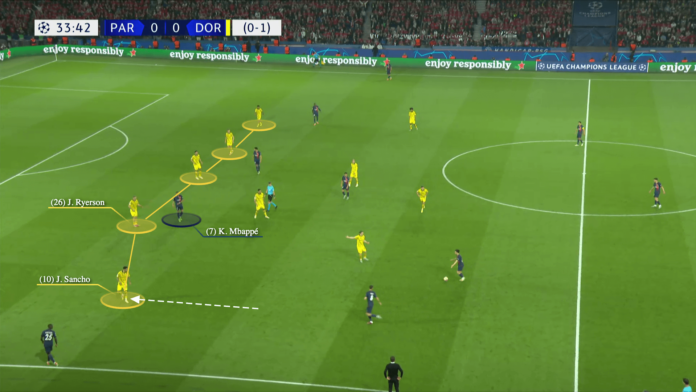There’s a tendency to frame football matches in black and white: the winners got it right, the losers weren’t up to the task.
But the reality is usually somewhere in between — an individual mistake here, or a shot that hits the post and stays out there, moments that can change the game state and momentum.
More often than not, the 90 minutes and more played on the pitch are a shade of grey, and Borussia Dortmund’s 1-0 away win against Paris Saint-Germain on Tuesday to take them into next month’s Champions League final, 2-0 on aggregate, was the perfect example of that.
On one hand, Dortmund’s defensive solidity in the first half and their brave defending of the box in the second secured them a crucial clean sheet. On the other, PSG had multiple chances to score in that second half and hit the woodwork four times on the night.
From the first minute, PSG were intent on getting back into the tie. They pushed their full-backs, Achraf Hakimi and Nuno Mendes, on into the front line, with Fabian Ruiz dropping deeper to form a 3-2-5 shape in possession.
Luis Enrique’s side were looking to find overloads in the wide areas to play through Dortmund’s defence, but the Bundesliga side’s organisation without the ball proved tough to break down in the first half.
To combat PSG’s five players in the attacking line, Dortmund’s wingers, Jadon Sancho and Karim Adeyemi, regularly dropped to support their full-backs, forming a situational back five.

When PSG tried to access their widest players, Adeyemi or Sancho moved back, with Emre Can adjusting his positioning to prevent the home side from finding other blue shirts in between the lines.

In this example, Adeyemi’s positioning means Dortmund’s left-back, Ian Maatsen, can focus on defending Ousmane Dembele in the half-space, with Can ready to support.
Once Hakimi plays the ball to Dembele…
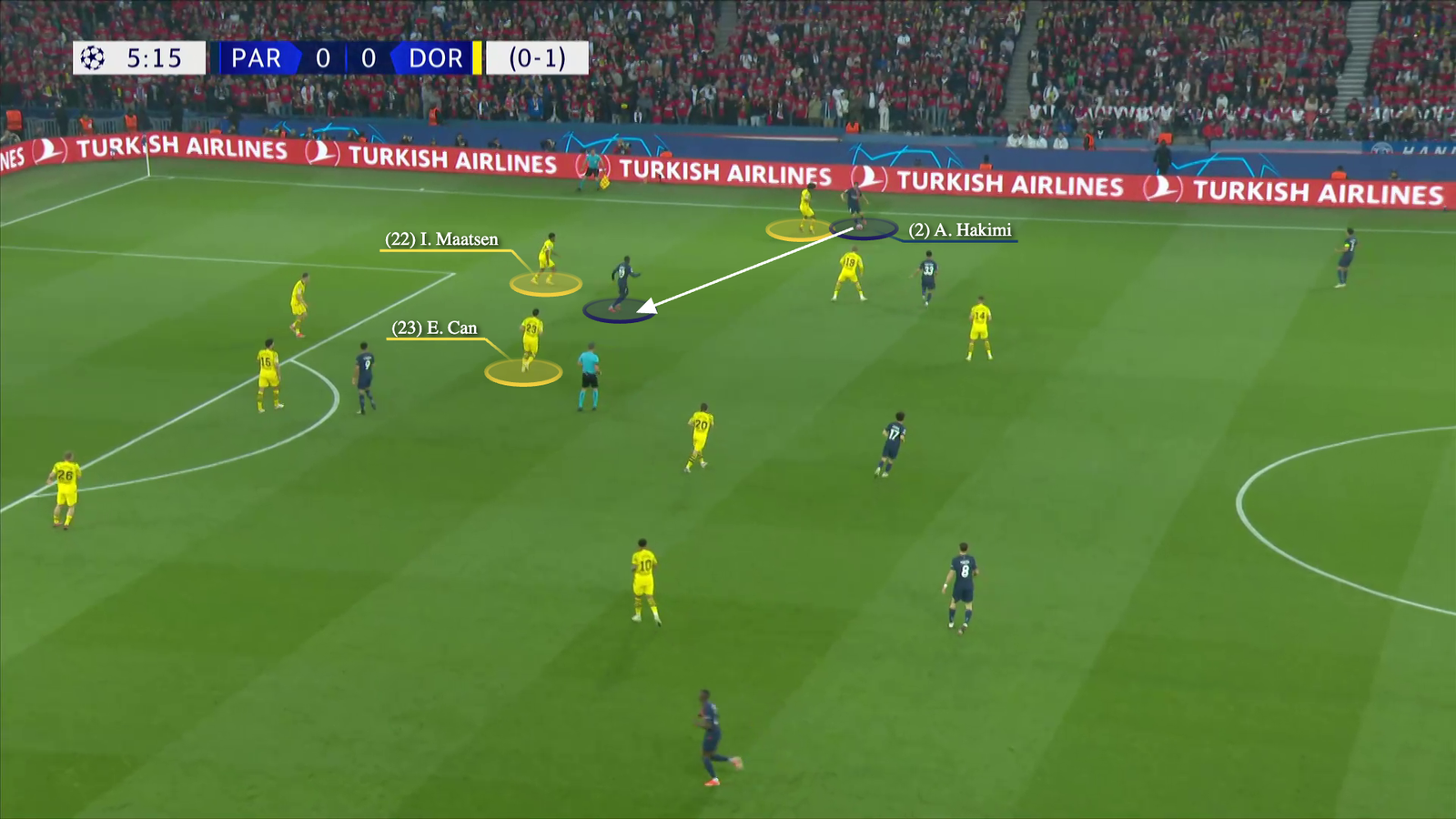
… Can moves up and dispossesses the France winger, stopping PSG’s attack.
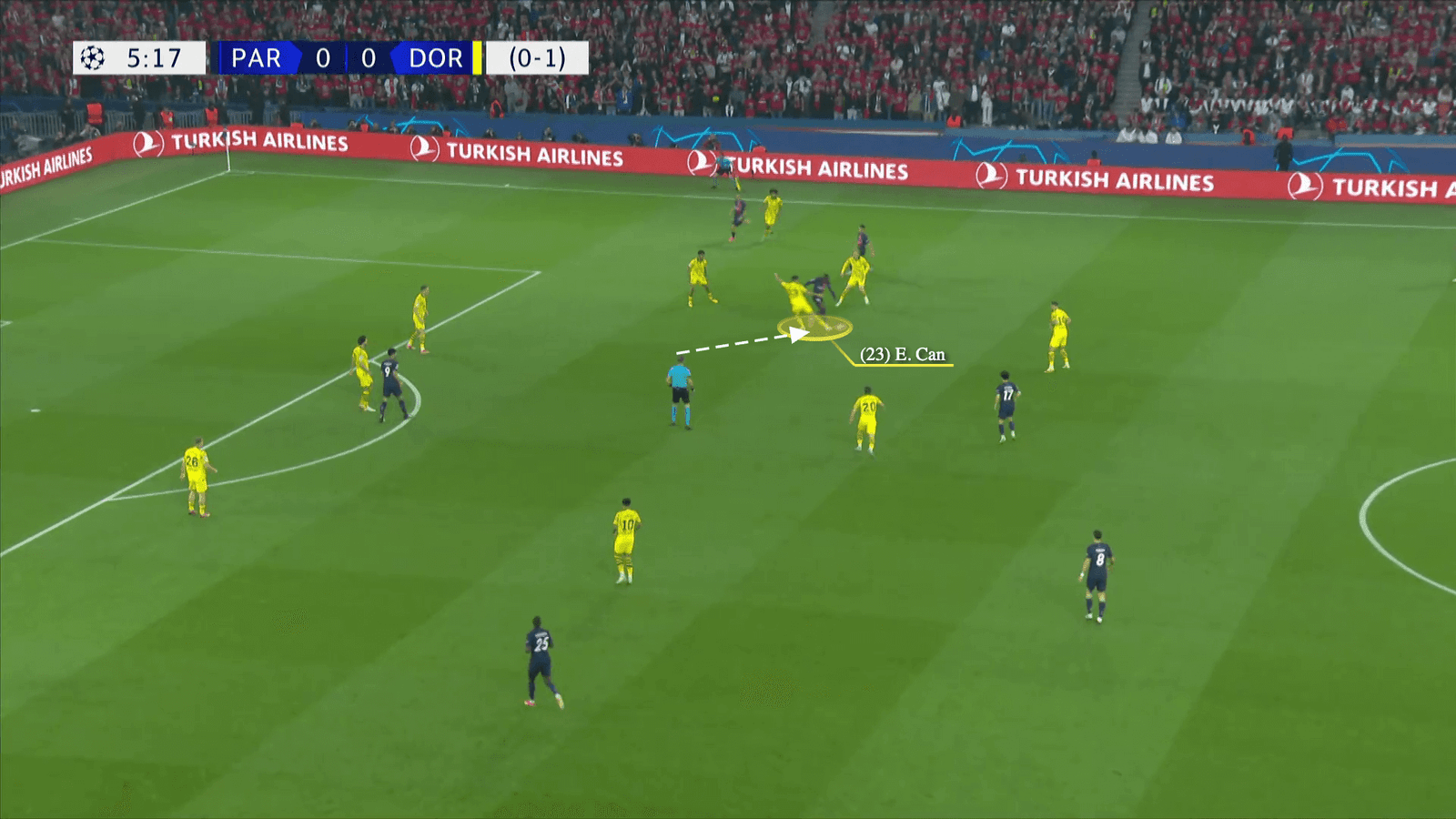
In this next example, Adeyemi is sitting deeper than the rest of Dortmund’s midfield, so he can drop and defend against Hakimi as Maatsen focuses on Dembele.
Marquinhos plays the ball wide to start the attacking sequence…
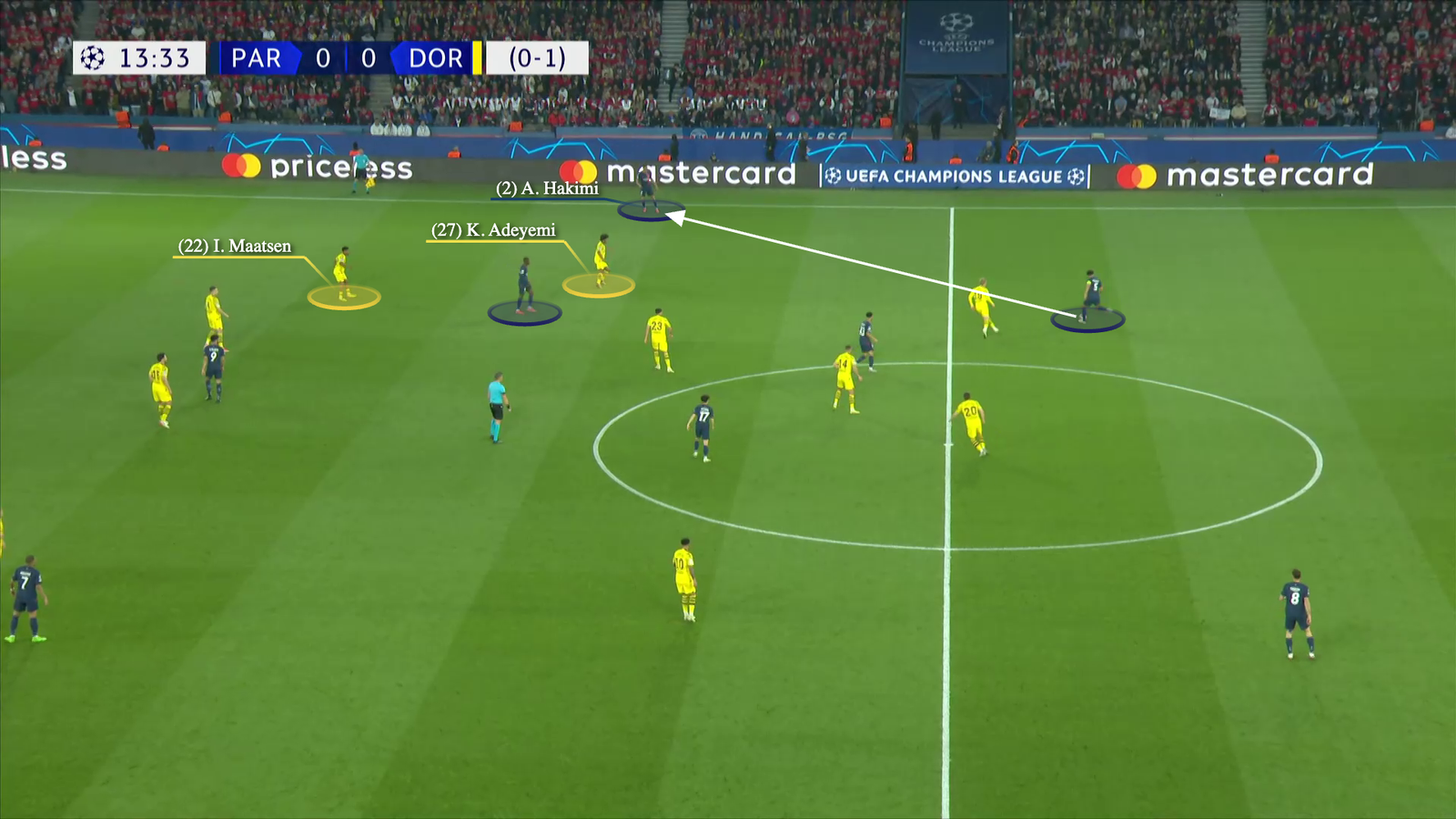
… but the overloads Luis Enrique’s side want to create out wide aren’t possible due to Adeyemi’s defensive positioning. Meanwhile, Can drops to support Dortmund’s left side as Hakimi passes to Dembele…

… who isn’t able to play the return ball to his right-back because Maatsen is blocking the passing lane.
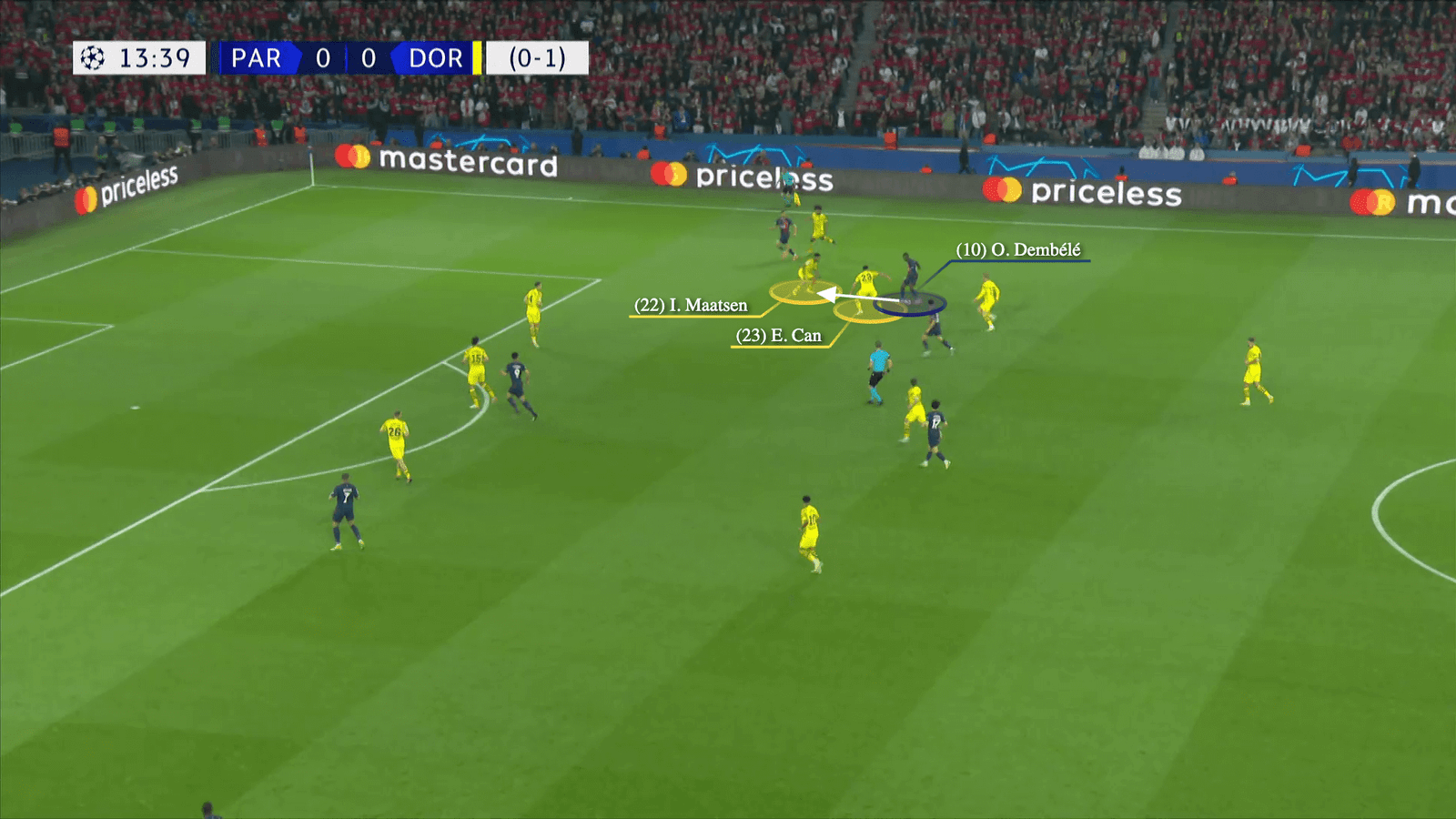
Can’s defensive role also meant he was able to track Warren Zaire-Emery’s forward surges into space on the occasions when Maatsen and Adeyemi were dragged out wide.

It was a similar situation on the other side of the pitch, where Sancho dropped to form a back five when Dortmund were defending their right flank. The England winger’s defensive role allowed his right-back, Julian Ryerson, to completely focus on Kylian Mbappe.
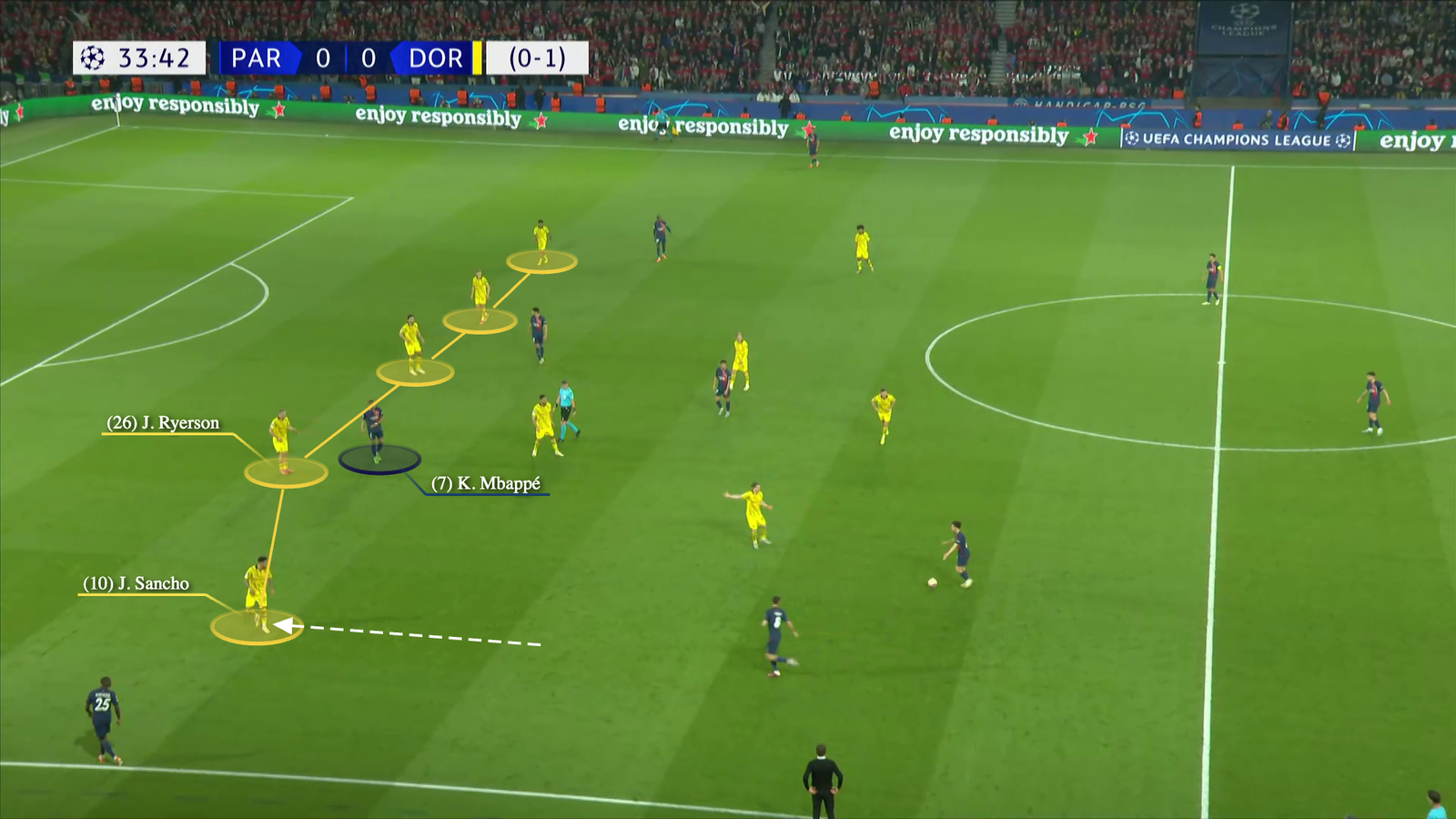
The best example of Sancho and Adeyemi’s importance to this defensive performance came early in the second half, after Dortmund took the lead on the night, doubling their aggregate advantage.
Here, Adeyemi’s deep positioning allows Maatsen to defend the half-space against Dembele, while, on the other side of the pitch, Sancho is ready to drop…

… which means that Ryerson can concentrate on dealing with Mbappe.
Back on PSG’s right, Zaire-Emery goes wide to Hakimi…

… but the right-back’s cross gets cleared by Sancho, who beats Mendes to the ball.

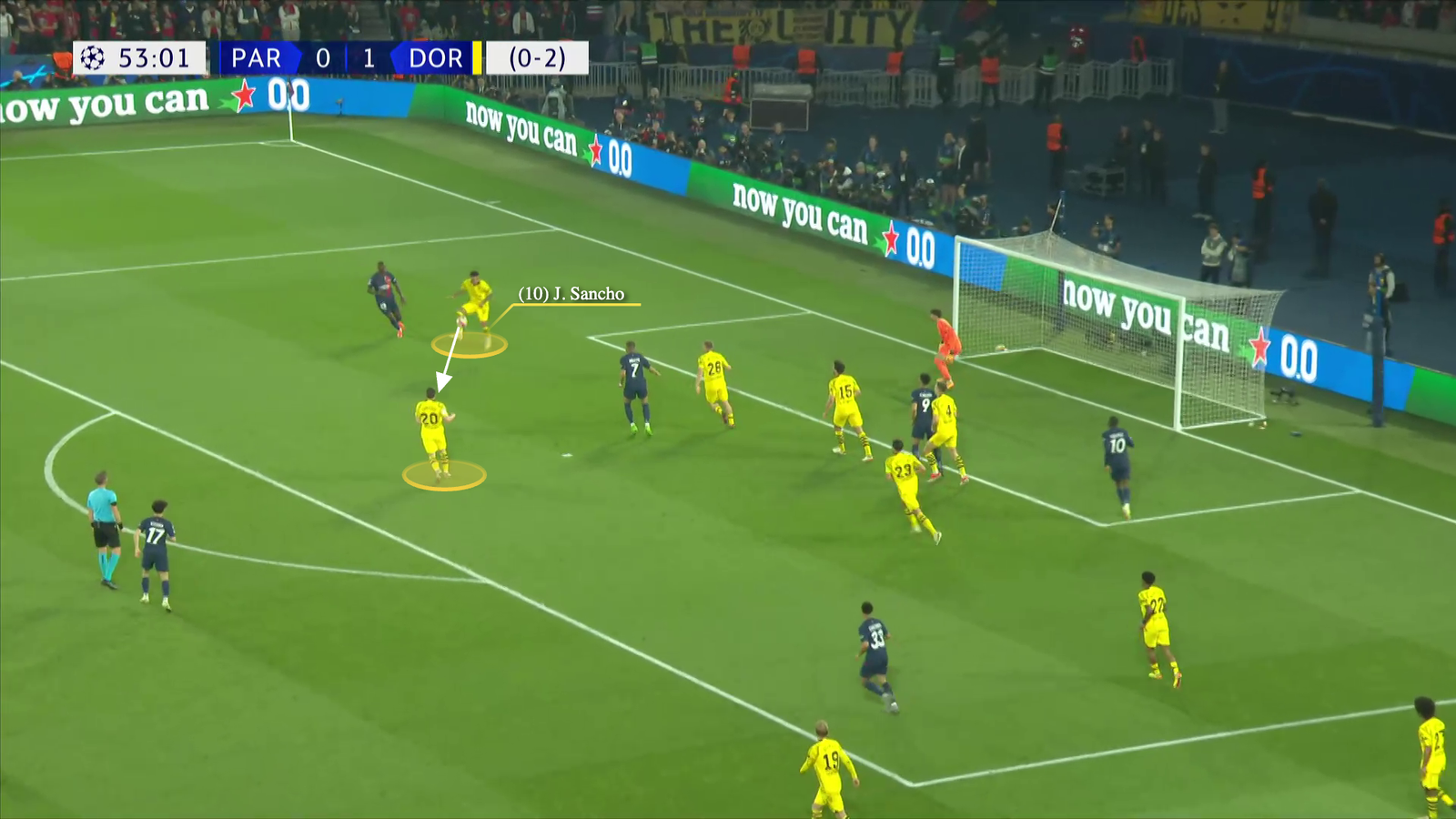
For all of Dortmund’s impressive defensive display in the first hour, they were helped by the erratic nature of PSG’s final passes. It was telling that, when that aspect of their game improved, they played through Dortmund’s block on three occasions.
In this first example, a combination featuring Hakimi and Dembele finds Vitinha’s untracked run behind Can…
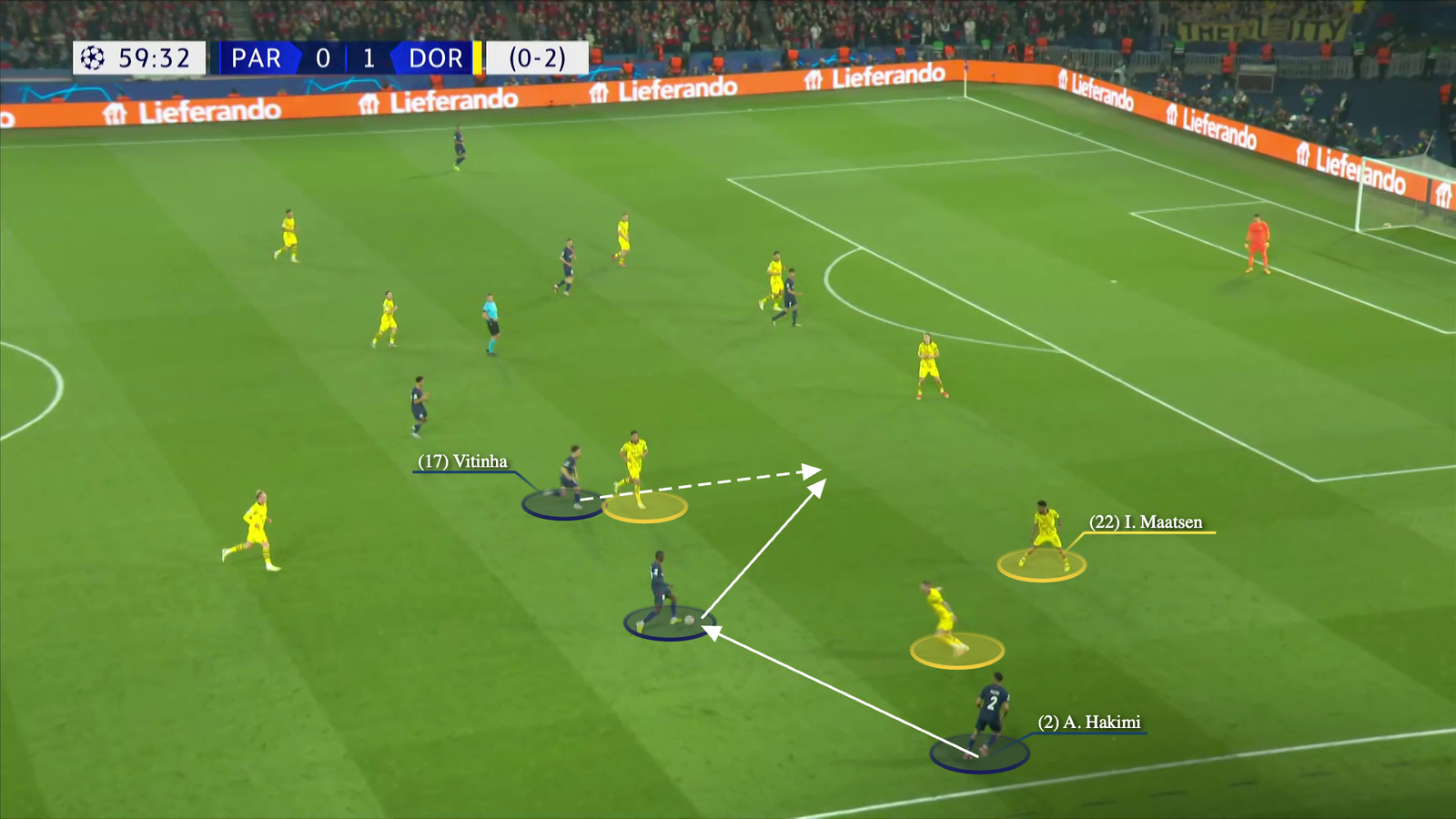
… before the Portugal midfielder squares the ball to Goncalo Ramos, whose shot misses the target.

Three minutes later, Dembele’s overload down the PSG left allows them to link up and find Mendes in space, after the left-back had sped past Marco Reus, and Marcel Sabitzer doesn’t switch assignments.
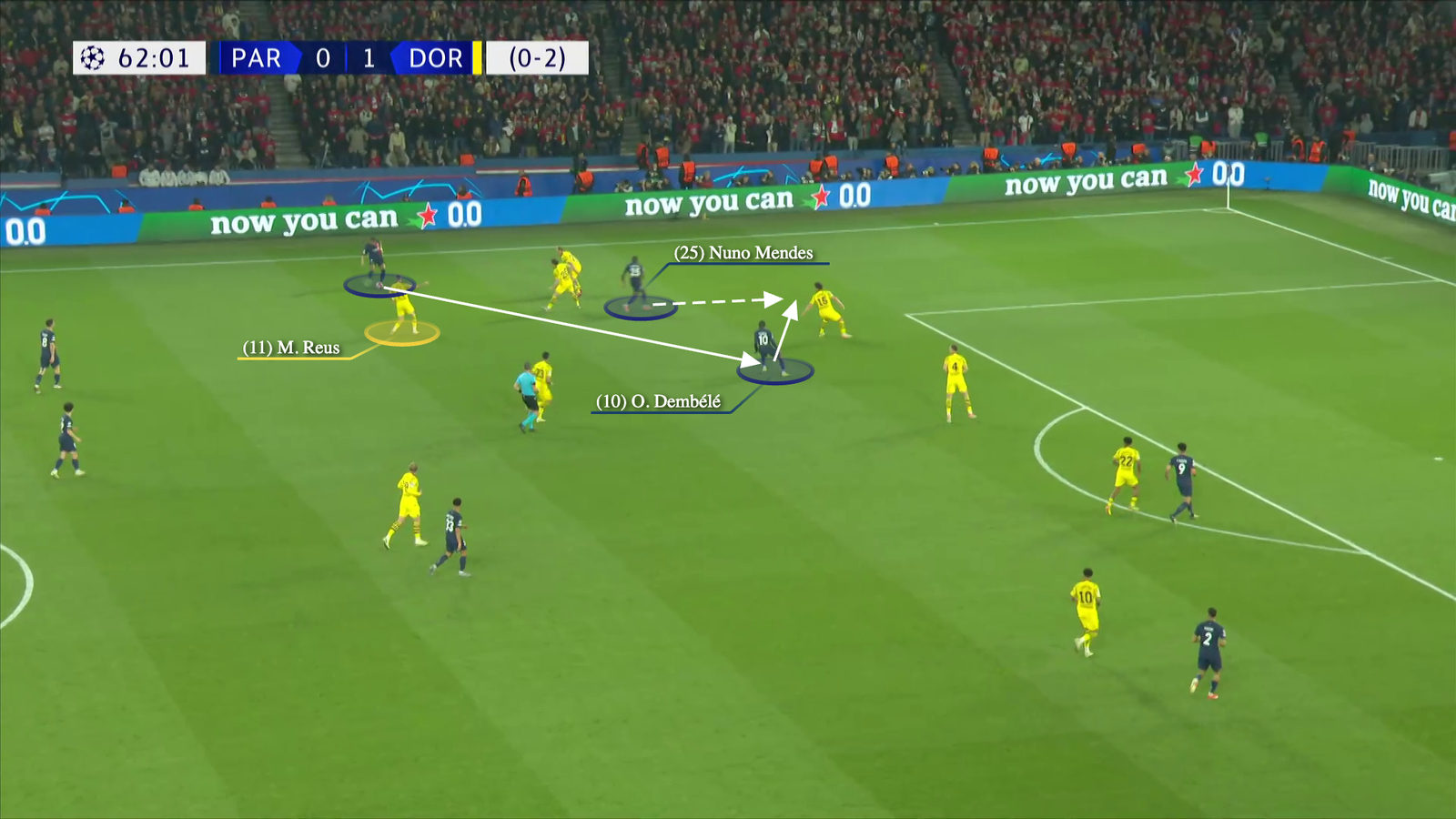
Mendes then plays a cutback to Ramos, who again doesn’t manage to hit the target.


The third situation came from a combination down PSG’s right. Here, Reus, Maatsen and Can are keeping track of Dembele, Hakimi and Zaire-Emery, but the passing combination between that trio penetrates Dortmund’s shape…
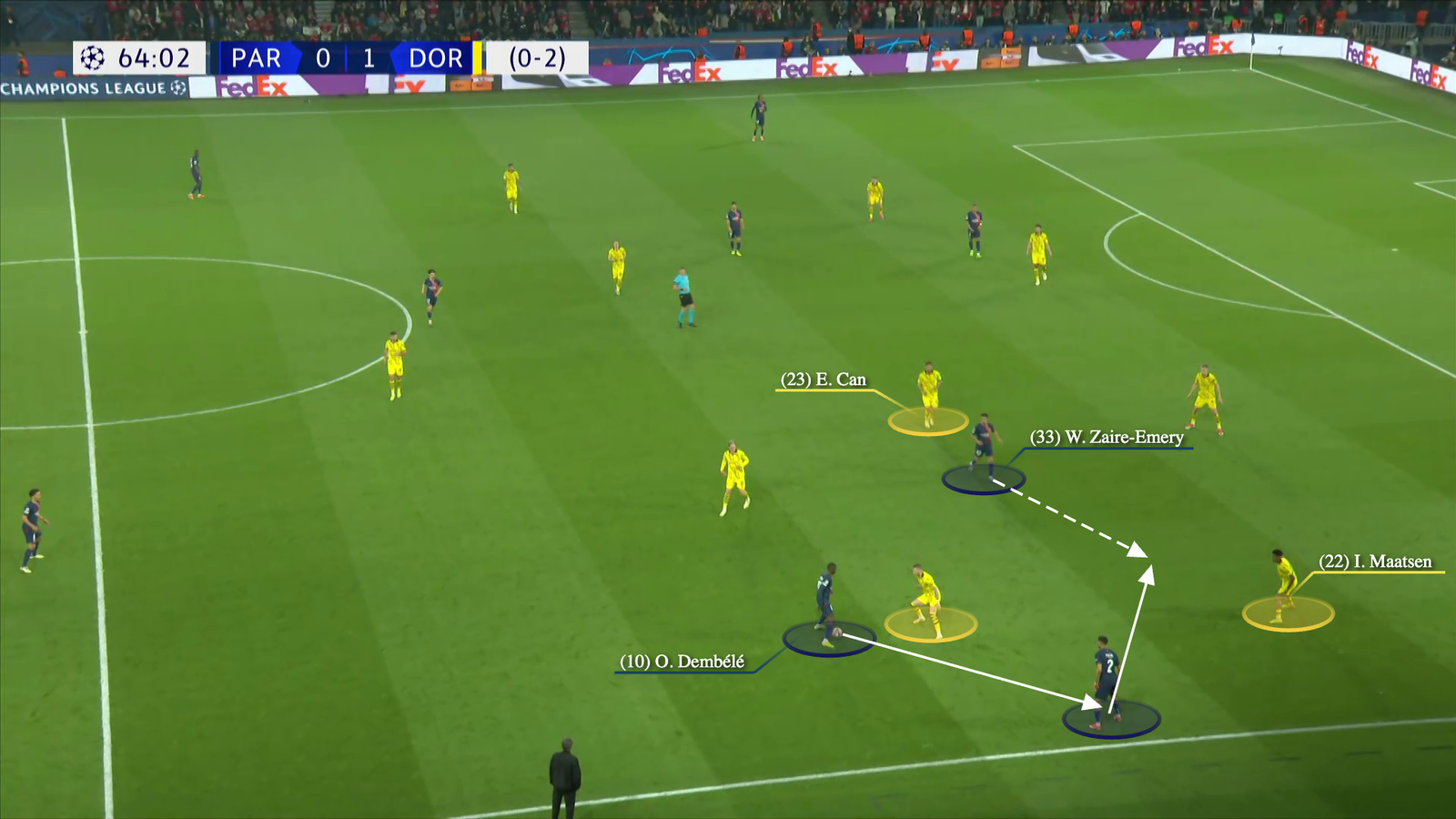
… and eventually finds Dembele in space after Reus switched his focus to the ball.
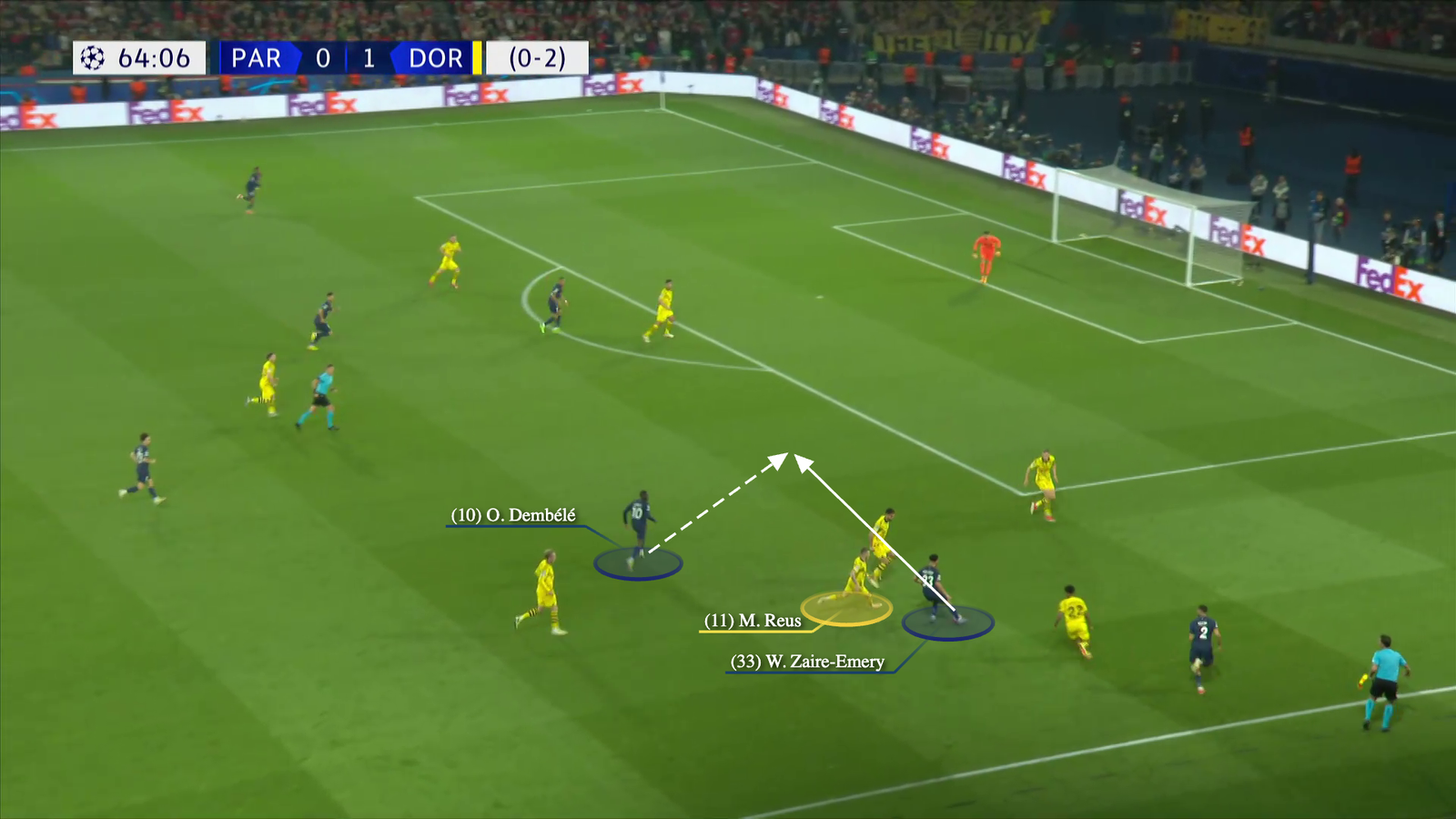
Mats Hummels then tries to stop Dortmund old boy Dembele, but only manages to foul him near the edge of the penalty area.
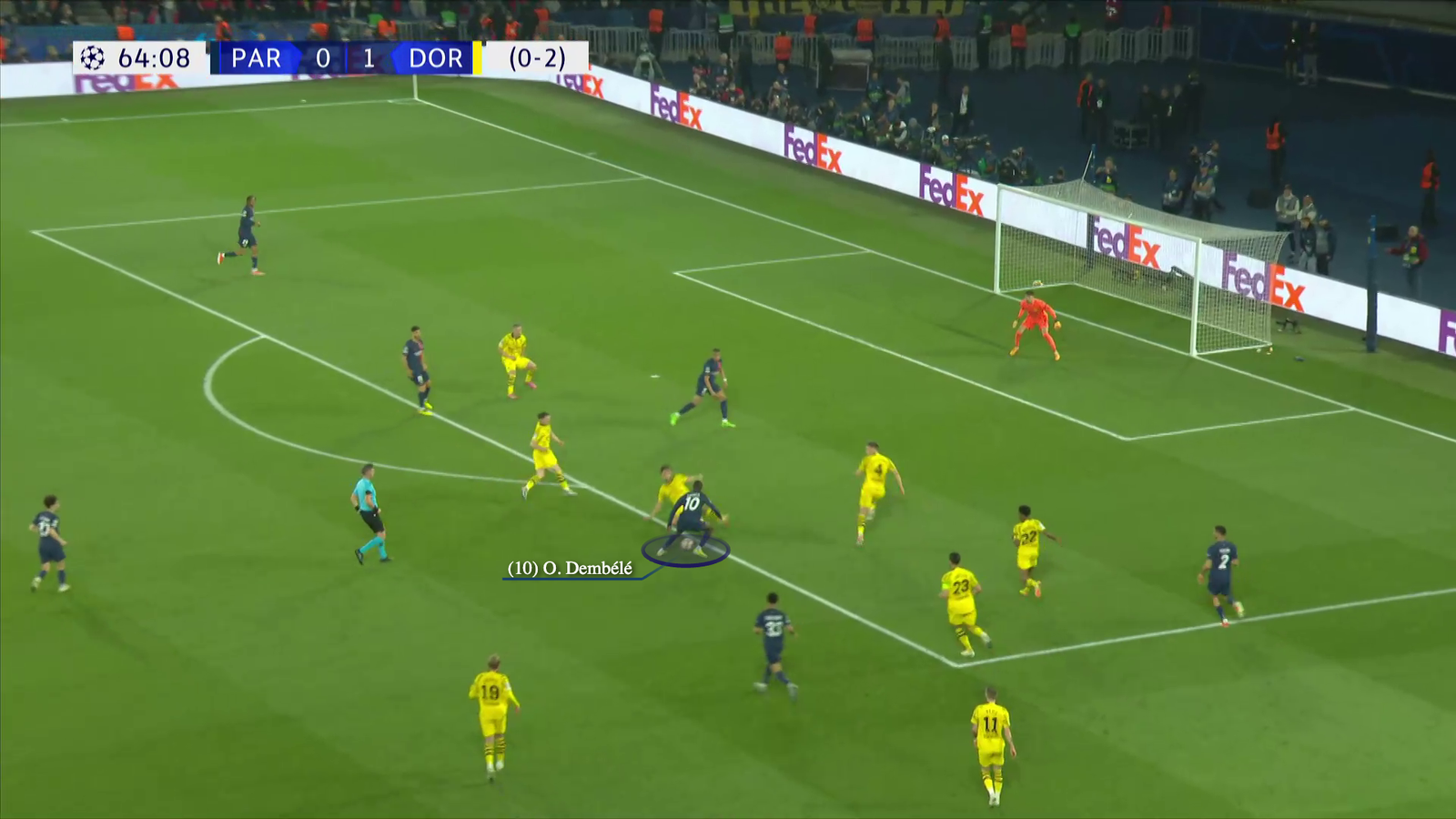
After those attacks, Dortmund coach Edin Terzic moved to a true back five, with Niklas Sule coming on for Sancho and Julian Brandt dropping to the right of midfield in what was a 5-4-1 shape out of possession.
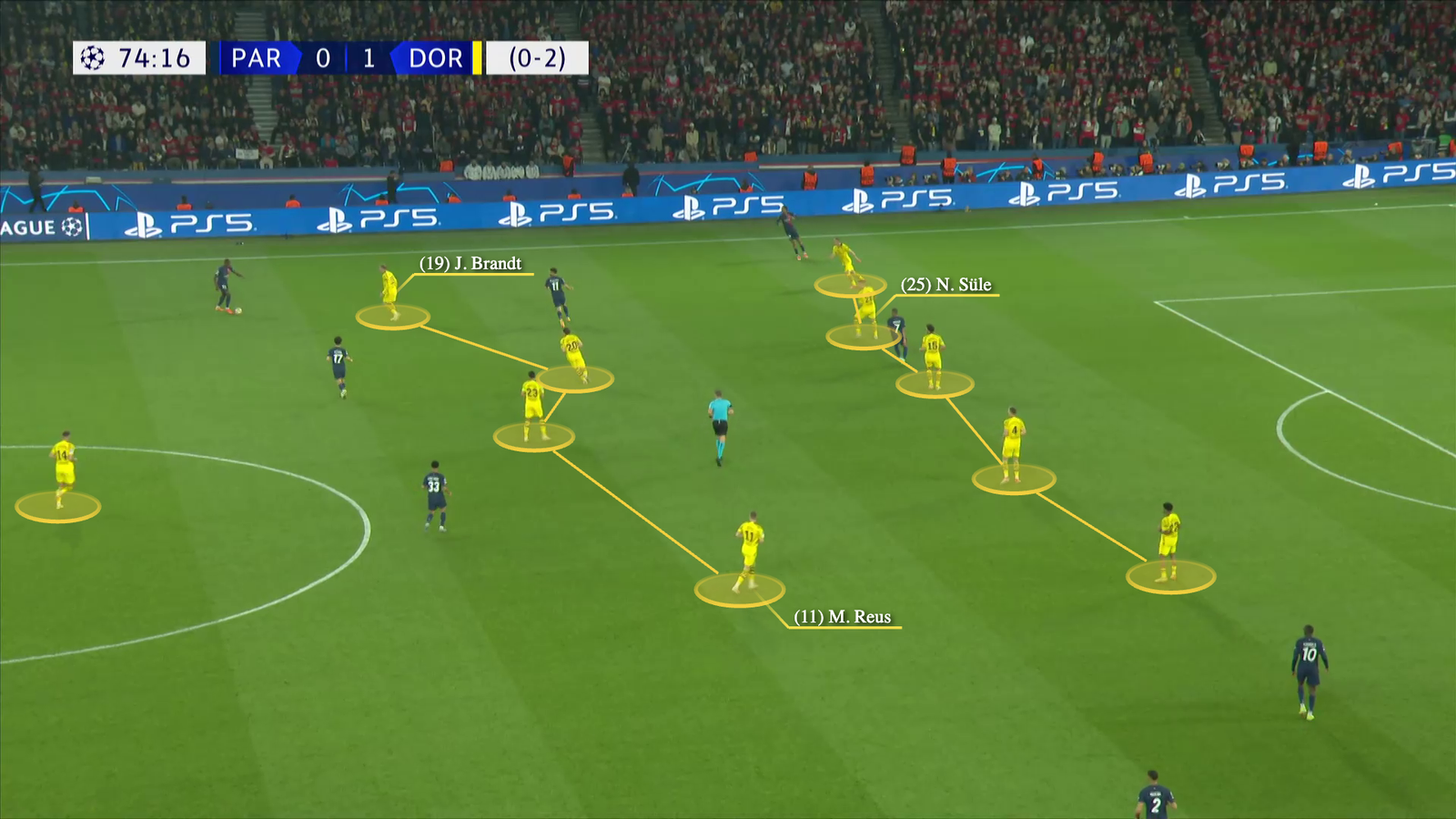
Still, Dortmund were focused on protecting the wide areas, with Reus dropping to support Maatsen against Hakimi and Dembele.

The introduction of Lee Kang-in in place of Zaire-Emery — and Ruiz being substituted by Marco Asensio just past the hour — increased PSG’s attacking pressure in the last 15 minutes of the match, with PSG’s full-backs pushing forward as well.
Eventually, it took a backs-to-the-wall-defending display from Dortmund, the ball hitting the woodwork on four occasions and PSG missing numerous chances as the visitors maintained their single-goal lead on the night and advanced to the Champions League final for the third time in club history.
“We know that if we had played this game 10 times today, we probably wouldn’t have won it 10 times,” said Terzic. “It’s just that at this level, it’s the little things that decide (the match), and we managed to get the little things on our side in these two games.”
Read the full article here


